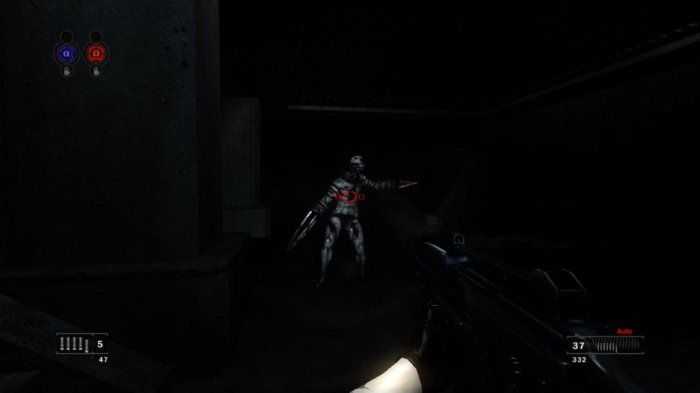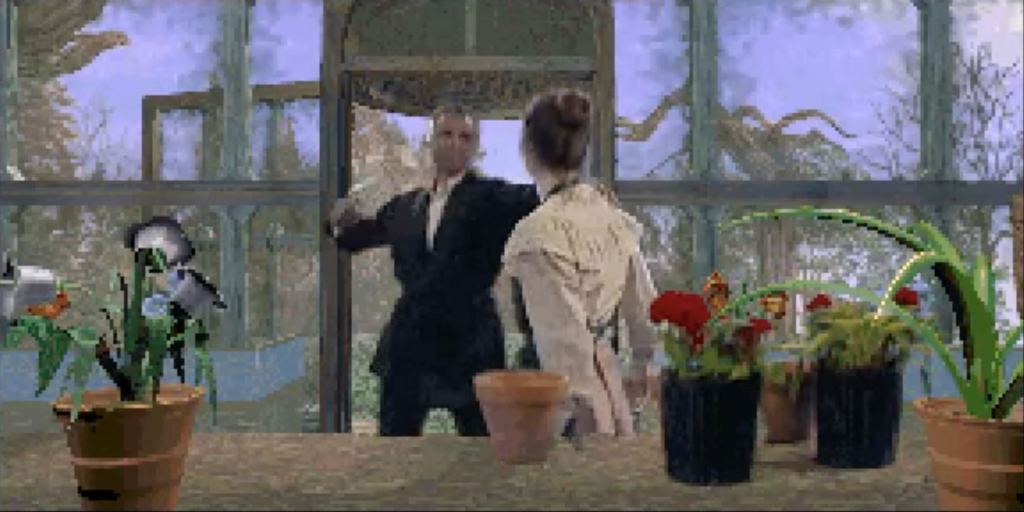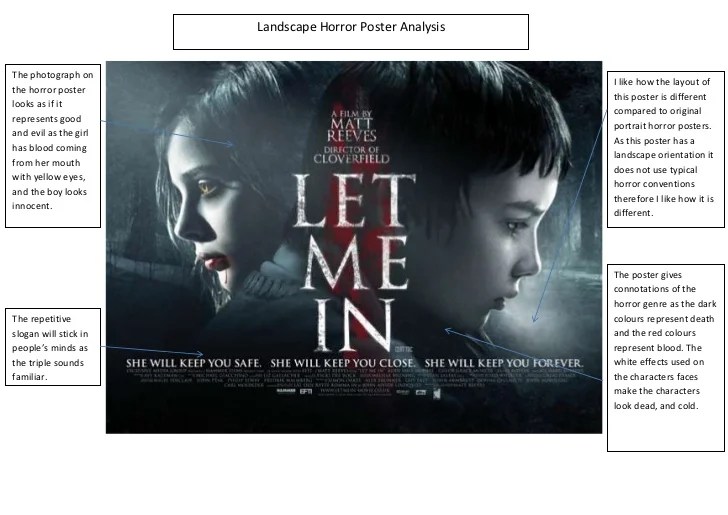Disturbing horror game imagery analysis delves into the psychological impact of fear-inducing visuals in video games. From the chilling visuals of body horror to the unsettling atmosphere of psychological thrillers, this exploration examines how designers craft experiences that push players’ emotional boundaries. We’ll dissect the methods behind these disturbing representations, exploring the interplay of visual and auditory elements, and analyze the resulting psychological effects on players, considering social and cultural contexts, and highlighting key examples from iconic horror games.
This analysis will examine the diverse techniques used to create disturbing imagery in games, ranging from the grotesque to the unnerving. It will investigate the specific visual and auditory elements employed to evoke fear and unease, and analyze how these techniques influence players’ emotional responses. The analysis will also consider the broader social and cultural factors that shape the perception and interpretation of disturbing imagery in games.
Defining Horror Game Imagery
Horror game imagery transcends mere graphic violence; it delves into the psychological depths of the player, exploiting visual elements to evoke fear, unease, and a profound sense of dread. The unsettling nature of this imagery is carefully crafted, pushing boundaries of acceptable representation and aiming to elicit a visceral reaction. This is not simply about showing gore; it’s about manipulating perception to instill a feeling of vulnerability and terror.
Disturbing imagery in video games manipulates the player’s emotional response by employing a variety of techniques. The deliberate design of environments, characters, and events plays a pivotal role in fostering a sense of unease and dread. This exploration of disturbing imagery examines the intricate relationship between visual elements and psychological impact, highlighting the unique characteristics of this medium.
Disturbing Imagery in Video Games: A Definition
Disturbing imagery in video games goes beyond the simple representation of violence. It specifically targets the player’s emotional and psychological state, aiming to evoke a sense of unease, fear, and often, a feeling of vulnerability. This is achieved through the deliberate use of unsettling visual elements, which create a disturbing atmosphere and a sense of dread. Disturbing imagery can manifest in various forms, from grotesque body horror to unsettling psychological scenarios, ultimately exploiting the player’s perception and emotional responses. The effect is to manipulate the player’s sense of security and comfort, leaving them feeling uneasy and disoriented.
Role of Visual Elements in Evoking Fear
Visual elements in video games are critical tools for eliciting fear and unease. The design of environments, the appearance of characters, and the presentation of events all contribute to the overall unsettling atmosphere. A dimly lit, cluttered space can evoke a sense of claustrophobia and helplessness. The appearance of deformed or monstrous characters can instill fear and revulsion. Even mundane objects, placed in unexpected or disturbing contexts, can trigger a sense of unease and paranoia. The interplay of light, shadow, color, and composition in a game scene is crucial to fostering the desired emotional response. The careful manipulation of these visual elements creates a deeply immersive experience, drawing the player into the game’s unsettling world.
Disturbing vs. Graphic Imagery
While graphic imagery often focuses on the explicit depiction of violence or gore, disturbing imagery goes beyond this. Disturbing imagery is more subtle and pervasive. It aims to evoke psychological responses rather than simply displaying violent acts. Graphic imagery might show a character being slashed, while disturbing imagery might focus on the character’s expression of terror or the distorted surroundings that heighten the player’s sense of unease. The former is more about spectacle, while the latter is about psychological impact.
Video Games’ Unique Impact on Perception
The interactive nature of video games fundamentally alters how disturbing imagery is perceived. Players are not simply passive observers; they are actively participating in the unfolding narrative. This active engagement deepens the emotional impact of the imagery. The player’s sense of agency, combined with the immersive qualities of the game, creates a unique psychological experience. Furthermore, the ability to replay or explore elements of the game allows the disturbing imagery to linger in the player’s mind, amplifying its emotional effect.
Comparison of Disturbing Imagery Types
| Imagery Type | Description | Psychological Impact | Examples |
|---|---|---|---|
| Body Horror | Focuses on grotesque and disturbing transformations of the human body. | Evokes revulsion, disgust, and a sense of violation. | Mutated creatures, disfigured characters, unnatural body shapes. |
| Psychological Horror | Focuses on the player’s mental state and sense of isolation. | Evokes fear, paranoia, and a sense of dread. | Haunted environments, disturbing hallucinations, psychological torment. |
| Supernatural Horror | Focuses on the unsettling and unknown, often involving supernatural entities or phenomena. | Evokes fear of the unknown, dread of the unseen. | Ghosts, demons, eerie sounds, unexplained occurrences. |
Methods of Disturbing Representation

Horror games meticulously craft unsettling experiences, leveraging a potent blend of visual and auditory cues. This manipulation of the player’s perception is crucial to inducing fear, dread, and a sense of unease. These techniques, when expertly deployed, transcend the realm of mere entertainment, creating truly immersive and memorable experiences.
Visual Techniques of Unease
Visual elements play a pivotal role in establishing the atmosphere of a horror game. Lighting, color palettes, and camera angles work in concert to evoke a sense of foreboding and dread. A stark, flickering light source can highlight lurking shadows, hinting at unseen threats. Similarly, a pervasive darkness can amplify the sense of vulnerability and isolation.
- Lighting: Flickering, unnatural, or harsh lighting is a common tool to create a sense of unease. Consider the classic horror film trope of a single spotlight illuminating a terrifying figure in the dark. This technique isolates the player and highlights the danger, inducing a feeling of vulnerability. In games, this might manifest as a spotlight illuminating a gruesome scene or a flickering torchlight casting elongated shadows.
- Color Palettes: Color choices can dramatically affect the mood of a horror game. Muted, desaturated colors like grays, browns, and deep blues can evoke a sense of decay, isolation, and impending doom. Conversely, the use of vibrant, but unsettling, colors like crimson, or unnatural hues, can highlight a disturbing or surreal atmosphere. For instance, the use of a sickly yellow in a game could indicate the decay of a place or the illness of its inhabitants.
- Camera Angles: The perspective from which the player experiences the world is paramount. A low-angle shot can make the player feel small and vulnerable, emphasizing the overwhelming nature of the environment. A high-angle shot, on the other hand, can instill a sense of detachment and paranoia, as if the player is observing a dangerous scene from a distant, detached vantage point. First-person perspectives, especially when paired with visceral close-ups, can heighten the sense of immediate danger and personal threat.
Sound Design and Music in Horror
Sound design and music are essential components in establishing a disturbing atmosphere in a horror game. The interplay between sound effects, music, and the player’s actions creates a powerful emotional response.
- Sound Effects: Sound effects play a crucial role in amplifying the disturbing aspects of a scene. Creaking floorboards, scratching sounds, guttural moans, or unsettling whispers can effectively build tension and suspense, heightening the player’s sense of vulnerability and dread. These sounds can be used to create an oppressive and suffocating atmosphere or to pinpoint the location of hidden dangers.
- Music: Music, often employed in a minimalist approach, can amplify the unsettling nature of the game’s visuals. A haunting melody, unsettling percussion, or dissonant chords can evoke a sense of dread and anticipation. The use of silence or sudden, jarring music cues can effectively heighten the tension and amplify the impact of frightening events. A subtle but constant background score can build anticipation and increase the player’s unease.
Interaction of Visual and Auditory Elements
The effectiveness of horror games often lies in the synergistic interplay between visual and auditory elements. A well-designed game will use visual and auditory cues to reinforce and amplify each other. A scene featuring a dark, shadowed room, coupled with ominous whispers and the rhythmic thudding of footsteps, creates a much more powerful and disturbing experience than either element alone.
| Visual Element | Auditory Element | Impact on Player Experience |
|---|---|---|
| Harsh, flickering light | Sudden, jarring noises | Heightened sense of dread, vulnerability |
| Desaturated color palette | Haunting, repetitive music | Sense of isolation, impending doom |
| Close-up, first-person perspective | Whispers, guttural moans | Heightened sense of personal threat, fear |
Psychological Impact on Players

Horror games, by their very nature, aim to evoke strong emotional responses in players. This often involves the use of disturbing imagery, which can have a profound and multifaceted impact on the psyche. The experience can range from simple unease to profound psychological distress, depending on individual factors and the nature of the imagery. Understanding these effects is crucial for developers to create engaging and responsible experiences.
The psychological effects of disturbing imagery in horror games extend beyond simple thrills and chills. They can trigger a range of negative emotions, from anxiety and fear to disgust and revulsion. These reactions are not always immediate or easily controlled, and can manifest in various ways, including nightmares, flashbacks, and even long-term psychological impacts in extreme cases. The power of these games lies in their ability to tap into primal fears and anxieties, making them a unique and potent medium for exploring the human psyche.
Emotional Responses to Disturbing Imagery
The impact of disturbing imagery is deeply intertwined with a player’s pre-existing emotional state and personality. Someone already prone to anxiety or fear may experience a more intense and prolonged negative reaction to disturbing imagery compared to someone who is more emotionally stable. Likewise, the player’s prior experiences and cultural background can influence their perception and response to specific types of disturbing imagery. For instance, a player with a traumatic past involving violence might react more intensely to graphic depictions of aggression in a game.
Desensitization and Repeated Exposure
Repeated exposure to disturbing imagery in horror games can lead to a phenomenon known as desensitization. While this may appear as a form of emotional resilience, it could also mask the underlying emotional impact of the disturbing content. In essence, the player may become less emotionally reactive to the imagery over time, potentially leading to a diminished experience and a lack of empathy for the characters and themes within the game. This effect, however, should not be interpreted as a universal phenomenon, as individual responses vary greatly.
Potential Emotional and Psychological Responses to Specific Imagery
| Type of Disturbing Imagery | Potential Emotional Responses | Potential Psychological Responses |
|---|---|---|
| Graphic Violence | Fear, disgust, revulsion, anxiety, anger | Nightmares, flashbacks, heightened anxiety, difficulty sleeping, desensitization (potential) |
| Psychological Horror | Fear, dread, paranoia, isolation, helplessness | Increased anxiety, intrusive thoughts, difficulty concentrating, feelings of vulnerability, depression (potential) |
| Body Horror | Disgust, revulsion, anxiety, feelings of unease, discomfort | Disturbed sleep, nightmares, feelings of revulsion, long-term discomfort, avoidance behaviors (potential) |
| Survival Horror | Fear, panic, anxiety, desperation, dread | Increased anxiety, feelings of helplessness, insomnia, flashbacks (potential) |
Note: The table above provides a general overview of potential responses. Individual reactions may vary significantly.
Social and Cultural Context

The portrayal of disturbing imagery in horror games isn’t a vacuum; it’s deeply intertwined with the social and cultural fabric of the societies that consume them. Cultural norms regarding violence, fear, and taboo subjects profoundly influence both the creation and reception of these games. The line between acceptable representation and transgression is often blurred, with the impact of the imagery depending heavily on the audience’s pre-existing sensitivities and anxieties.
The design choices of horror game developers, whether consciously or subconsciously, reflect the prevailing societal attitudes of their time. A society more tolerant of graphic violence might allow for more explicit depictions of gore, while a more sensitive one might opt for metaphorical representations of fear. This dynamic interplay shapes the evolving landscape of disturbing imagery in horror games, constantly adapting to changing social perceptions.
Influence of Social Norms on Disturbing Imagery
Societal attitudes toward violence, particularly in media, are key determinants of the kinds of disturbing imagery that emerge. A culture that has historically demonized certain groups or practices might lead to the use of disturbing imagery to represent those groups or their perceived characteristics. Similarly, a culture that emphasizes individualism and freedom of expression might allow for a broader spectrum of disturbing imagery, while a culture prioritizing community cohesion might temper the graphic nature of such depictions. This is not always a conscious choice, but rather a reflection of the broader cultural context in which the games are created.
Societal Attitudes Toward Violence and Fear Impacting Game Design and Reception
The impact of societal attitudes toward violence and fear extends to both the design and the reception of these games. Games designed in a society with a higher tolerance for graphic violence may face less criticism and greater acceptance, while games designed in a culture more sensitive to such depictions may generate significant controversy. Furthermore, the audience’s reception of disturbing imagery is also shaped by their personal experiences and perspectives, leading to varying levels of emotional impact and reactions. For example, a player raised in a culture where violence is commonplace might react differently to a graphic depiction of violence compared to a player from a culture that values non-violent conflict resolution.
Comparison of Disturbing Imagery Across Cultures and Regions
The portrayal of disturbing imagery varies significantly across cultures and regions. Games developed in Japan, known for its rich folklore and supernatural elements, often explore themes of the uncanny and the supernatural in a unique way, sometimes employing disturbing imagery to depict the terrifying aspects of these stories. Contrastingly, horror games originating from the United States might focus on more realistic representations of psychological trauma or societal anxieties. This difference is evident in the way characters are depicted, the settings they inhabit, and the narrative themes explored.
Disturbing Imagery Reflecting Social Anxieties
Horror game imagery frequently mirrors broader social anxieties. Periods of social upheaval or uncertainty often manifest in games with themes of societal collapse, the breakdown of order, and the struggle for survival. Examples include the proliferation of zombie games during times of social and economic unrest, which often reflect anxieties about societal collapse and the loss of control. Games depicting monstrous figures or antagonists can symbolize fears about the unknown or the loss of innocence.
Evolution of Disturbing Imagery in Horror Games
| Era | Key Characteristics | Examples |
|---|---|---|
| Early 1990s | Limited graphical capabilities, reliance on atmosphere and sound design. | Alone in the Dark, Resident Evil |
| Late 1990s-2000s | Increased graphical fidelity, exploration of psychological horror, and the incorporation of gore. | Silent Hill, Resident Evil 4 |
| 2010s-Present | Greater realism, emphasis on player agency and psychological torment. Increasing diversity in themes and imagery. | Outlast, Alien: Isolation, Resident Evil 7 |
This table highlights a general trend towards more graphic and unsettling imagery in horror games over time, reflecting broader cultural shifts and technological advancements. It is important to note that these are broad generalizations, and individual games within each era may deviate significantly.
Illustrative Examples of Imagery
The visual language of horror games transcends mere depictions of monsters; it crafts an atmosphere, a psychological landscape designed to elicit profound emotional responses. Specific imagery, meticulously crafted, can induce feelings of dread, paranoia, and profound unease, pushing players into a state of heightened awareness. The following examples delve into the disturbing techniques employed in select titles.
Horror game imagery often works by exploiting the player’s pre-existing fears and anxieties, twisting them into grotesque and unsettling forms. This manipulation of the familiar is crucial in establishing a sense of disorientation and dread.
Visceral Character Design in Silent Hill
Silent Hill’s enduring legacy is inextricably linked to its disturbing character designs. These characters are not simply monstrous; they are distorted reflections of humanity, warped by the oppressive environment.
- The grotesque figures in Silent Hill 2, such as the infamous Pyramid Head, embody the game’s pervasive sense of dread. Their unnatural forms and unsettling presence contribute significantly to the game’s psychological impact. The unsettling anatomy and expressions of these characters are designed to unsettle and evoke feelings of dread and paranoia in players.
- The distorted and decaying features of the character models in Silent Hill, coupled with their often-silent, predatory movements, amplify the sense of threat and helplessness. This deliberate unsettling of human form is a key technique in creating a deeply unsettling atmosphere.
- The grotesque nature of the characters, from their twisted forms to their unsettling expressions, creates a potent sense of unease. This serves to highlight the game’s exploration of psychological torment and societal anxieties.
Psychological Dissonance in Resident Evil
Resident Evil masterfully uses a blend of visual and auditory cues to induce psychological unease in the player. The game often juxtaposes familiar environments with terrifying transformations, creating a sense of unsettling ambiguity.
- The gradual degradation of environments, like the decaying mansion in the original Resident Evil, contributes to the unsettling atmosphere. The juxtaposition of familiar structures with unsettling details (e.g., the presence of corpses or biohazard signs) amplifies the game’s sense of dread.
- The game frequently utilizes sudden and unexpected jumpscares, often paired with disturbing visuals of grotesque monsters. These rapid shifts between moments of calm and terror heighten the player’s anxiety and anticipation of the next encounter. These are designed to cause a surge of adrenaline, inducing a visceral reaction in the player.
- The game frequently employs unsettling lighting and shadows to create a sense of claustrophobia and paranoia. The limited visibility and the use of shadowy figures or creatures further enhance the feeling of unease and vulnerability.
Environmental Terror in Amnesia: The Dark Descent, Disturbing horror game imagery analysis
Amnesia: The Dark Descent leverages a unique approach to horror, relying heavily on psychological dread rather than direct violence. The game creates a sense of isolation and vulnerability through its unsettling environments.
“The oppressive atmosphere of the game is almost entirely built on the fear of the unknown and the feeling of being watched.”
- The game’s desolate and foreboding environments, filled with unsettling details, such as decaying objects, are designed to evoke a feeling of helplessness and vulnerability. The player is left to confront their anxieties and fears in a visually and emotionally isolating world.
- The absence of direct confrontation often amplifies the fear, as the player is left to interpret the signs of danger and the potential threats lurking in the shadows. The game’s unsettling silence, broken only by the player’s own breathing and the sound of creaking objects, exacerbates the sense of isolation and dread.
- The game’s environments, characterized by their decay and oppressive atmosphere, are designed to create a constant sense of unease and threat. The player is constantly aware of their surroundings and the unseen dangers lurking in the shadows, leading to a feeling of perpetual vulnerability.
Analysis of Specific Game Examples

Silent Hill, a cornerstone of horror gaming, masterfully crafts a disturbing atmosphere, pushing the boundaries of what players can endure. Its narrative, steeped in psychological dread, intertwines with a visual and auditory landscape meticulously designed to induce fear and unease. The game’s influence on the horror genre is undeniable, shaping subsequent iterations and inspiring countless imitations.
The game utilizes a potent cocktail of visual and auditory cues to elicit a profound sense of unease. These cues, carefully orchestrated, work in tandem to create an oppressive and claustrophobic environment. The unsettling imagery in Silent Hill transcends mere graphic depictions of violence; it delves into the psychological realm of the player, exploiting fears and anxieties often hidden beneath the surface.
Visual Cues in Silent Hill
Silent Hill’s unsettling aesthetic stems from its unique visual style. The game’s environments are often distorted and surreal, with grotesque imagery pervading every corner. Characters are frequently rendered in a macabre fashion, their expressions contorted into unsettling grimaces. The use of shadows and lighting plays a crucial role in amplifying the atmosphere of dread. Dark alleys and shadowy corners become conduits for fear, amplifying the sense of isolation and vulnerability. The game also employs color palettes that contribute to the unsettling atmosphere. Muted colors, often tinged with an eerie hue, evoke a sense of disorientation and dread. The juxtaposition of these colors with grotesque imagery creates a powerful and memorable visual experience.
Auditory Cues in Silent Hill
The auditory landscape of Silent Hill complements the visual elements, enhancing the game’s overall impact. The soundtrack, often composed of haunting melodies and unsettling soundscapes, contributes significantly to the atmosphere of dread. The use of unnerving sound effects, such as the creaking of doors, the rustling of leaves, and the distant cries, evokes a sense of unease and impending danger. The lack of music in certain areas, juxtaposed with the sudden appearance of terrifying sounds, further heightens the psychological impact. The audio design reinforces the visual elements, ensuring a cohesive and immersive experience that transcends simple visual representation.
Psychological Impact of Disturbing Imagery
The disturbing imagery in Silent Hill elicits a range of psychological responses in players. The grotesque visuals and unsettling soundscapes can trigger feelings of anxiety, fear, and even nightmares. The game taps into primal fears, exploiting the human psyche’s vulnerabilities. The constant sense of dread and impending doom creates a state of heightened alertness, and the player is often left with a lingering sense of unease. This prolonged exposure to disturbing imagery can lead to psychological distress in some players. This distress is a direct result of the game’s meticulous design and exploitation of our deepest fears.
Social and Cultural Context
Silent Hill’s depiction of disturbing imagery reflects the anxieties and concerns of its era. The game’s themes of isolation, paranoia, and societal decay resonated with the cultural context of the 1990s. The game’s portrayal of psychological trauma and the grotesque was a significant departure from previous horror games, pushing the boundaries of what was considered acceptable in the gaming industry.
Table: Disturbing Imagery Analysis
| Disturbing Imagery | Method of Depiction | Effect on Player |
|---|---|---|
| Grotesque characters | Distorted features, macabre expressions | Elicits feelings of revulsion, fear, and anxiety |
| Surreal environments | Distorted perspective, unusual objects | Creates a sense of disorientation, dread, and vulnerability |
| Haunting music and sound effects | Unusual sound design, silence | Heightens feelings of fear, isolation, and anticipation |
| Psychological trauma | Depiction of suffering, isolation | Triggers anxieties, fears of the unknown |
Ultimate Conclusion: Disturbing Horror Game Imagery Analysis

In conclusion, disturbing horror game imagery analysis reveals a complex interplay between visual and auditory design, psychological impact, and cultural context. The analysis underscores how developers utilize these elements to craft unforgettable and often unsettling experiences. By understanding the methods and motivations behind disturbing imagery, we gain a deeper appreciation for the art and craft of horror gaming, and the power of these games to evoke strong emotional responses.